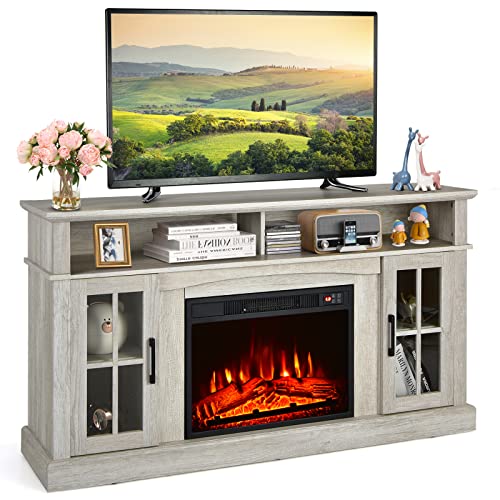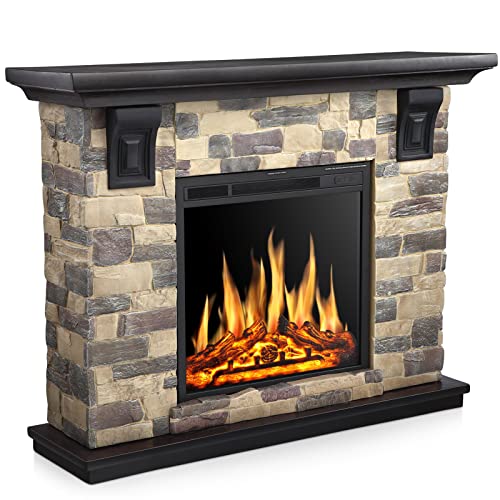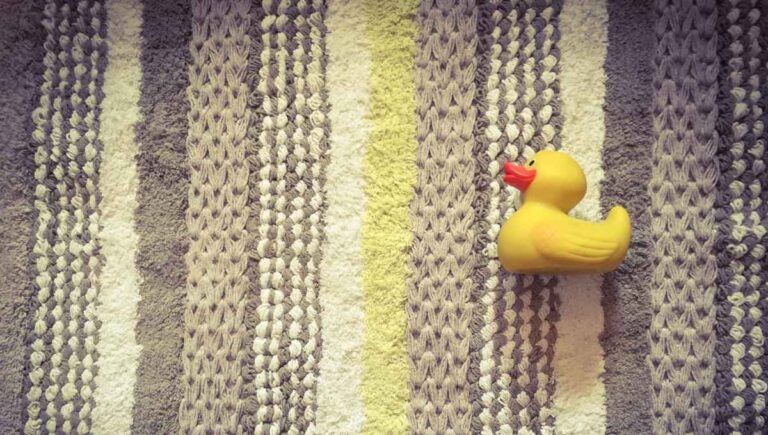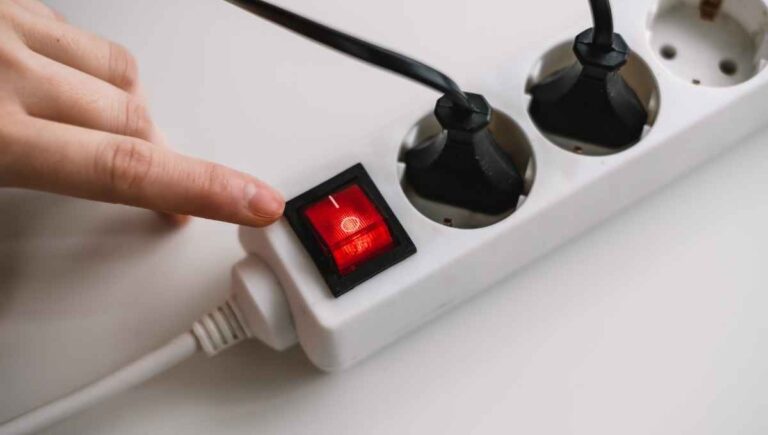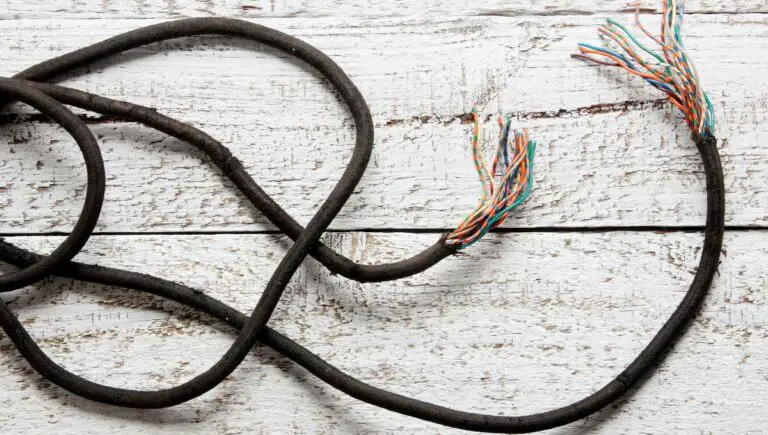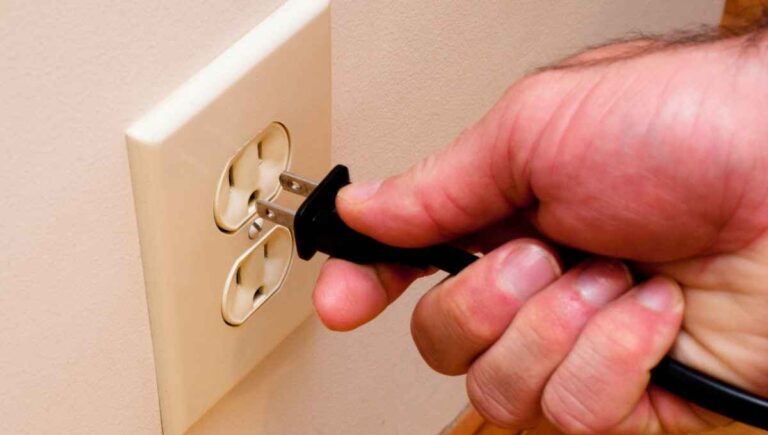Can a Fireplace Be Added to a House? (Here’s How to Do It)
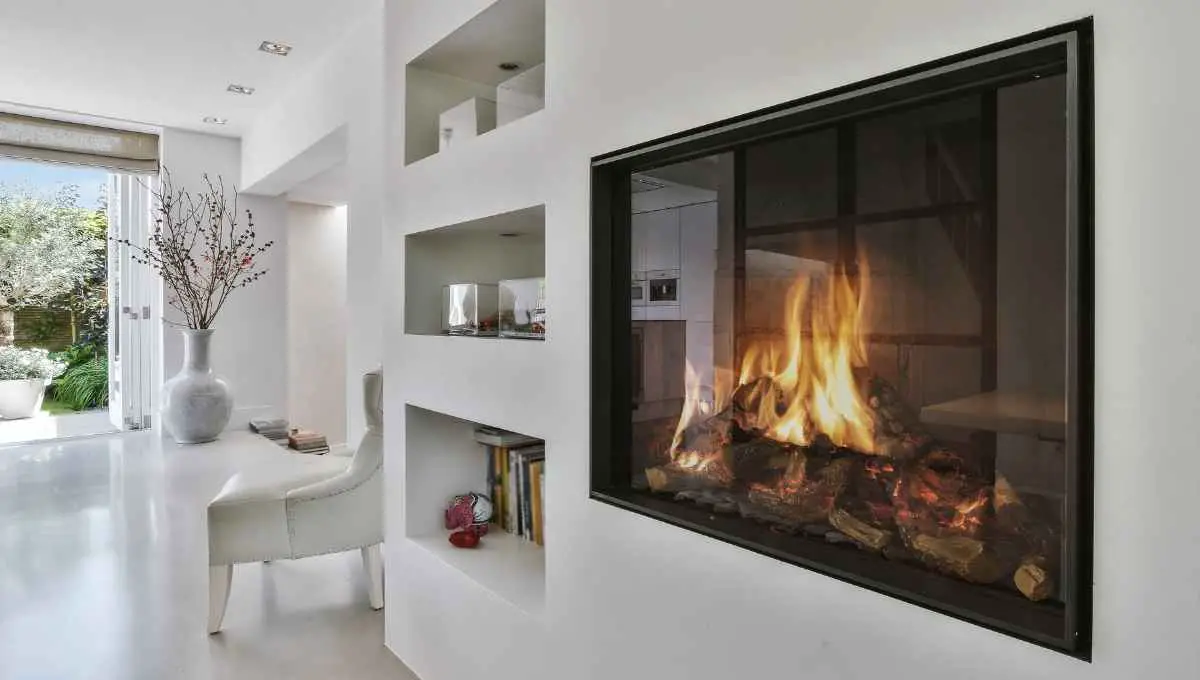
Everyone loves to socialize, read a book, or simply spend time with their loved ones in front of the fireplace. Sadly, homes these days aren’t usually equipped with fireplaces as often as they were in the past. With that being said, you might be wondering if a fireplace can be added to a house.
A fireplace of your choice can easily be added to an existing home. Of course, it is easier to add an electric fireplace as opposed to a wood-burning fireplace. Yet, with the right professionals, any fireplace can be added to your home.
Now that you know it’s possible to add a fireplace to a home, there are some crucial things that will make this a whole lot easier. In this blog post, we’ll discuss different types of fireplaces, compare the costs and complexity of projects, and guide you to make an informed decision. Let’s dive in!
This post contains affiliate links. This means Household Blogger may earn a commission should you make a purchase using any of our links. Please refer to our full affiliate disclosure policy for full details.
Here’s a Quick Pro Tip!
Electric fireplaces are the cheapest and the easiest to install. So, if you don’t feel like splurging thousands of dollars on an actual wood-burning fireplace, pick up an electric one instead. They work just as well to heat up your room.
Our favorite picks from Amazon:
1. Electric fireplace – Great alternative, less expensive, and easy to install.
2. Ventless gas fireplace – Also a great and cheap alternative but check your state building codes as these are banned in some states.
Is It Even Possible?
Thankfully, it is entirely possible to install a new fireplace and chimney into your existing house. And, if you don’t want to do it yourself, there are plenty of professionals willing to do it for you. Let’s discuss all the possibilities!
Can You Install a Fireplace in Your House?
Many modern houses are built without a fireplace in the original plan, but luckily you can install a fireplace in your house. Although, this is subjected to local building codes in your state.
After consulting your state’s building codes, you should decide which type of fireplace you want to install in your home. This influences the complexity and costs of your project.
We recommend working with an experienced local contractor who knows your local building codes.
Keep in mind that there are three main types of fireplaces:
- Direct-vent gas fireplace
- Masonry wood-burning fireplace
- Zero-clearance (factory-built) fireplace
Can I Install My Own Fireplace?
You can install your own fireplace with the proper skills and expertise. Your responsibility will be to research the local building codes and ensure that all standards are met.
We recommend working with a professional local contractor.
They will ensure that the fireplace is installed correctly, and they are also responsible for adhering to all the building standards in your state, which will save you from any legal troubles down the road.
Can I Add a Wood Fireplace to My House?
A masonry wood-burning fireplace is by far the most expensive and most challenging to install in a house. However, it’s not impossible. We recommend working with a professional who understands flues.
For a masonry wood-burning fireplace, venting is extremely important – no one wants their home to fill up with smoke due to improper venting. This is influenced by the height of the chimney, the size of the flue, and other factors.
How Hard Is It to Add a Fireplace to an Existing Home?
This depends on which type of fireplace you would want to add to an existing home. Masonry wood-burning fireplaces are the most complex to install, while electric fireplaces are the easiest.
Wood-burning fireplaces are the hardest simply due to the chimney and flue that must be installed and properly vented. In two-story homes, you have limited options of placing a wood-burning fireplace.
What Is a Ventless Fireplace Insert?
Ventless fireplaces are becoming more popular. They pump natural gas or propane through pipes and into a gas-burning unit. The flames then shoot up, usually between artificial logs.
These logs are placed purely for decoration and the aesthetic of an actual wood-burning fire. Even though these are increasing in popularity, they are banned in some states.
Check your local zoning department and municipality to see whether there are any restrictions.
You might also enjoy our post on If a Fireplace Can Explode
Should You Insulate Around a Fireplace Insert?
You should insulate all around the sides of the firebox and the flue of a fireplace insert. These fireplaces can be installed without masonry and are generally more energy-efficient than a traditional fireplace.
No matter if your fireplace insert is powered by gas, electricity, or wood-burning, it should be insulated.
Any fireplace generates a lot of heat, and you may lose some of that heat if your fireplace is not properly insulated.
Are Prefab Fireplaces Safe?
Prefabricated fireplaces are factory-tested. However, installation is crucial as incorrect installation could cause a house fire. You also need to be sure which type of fuel your prefab fireplace uses; gas or wood.
Using the wrong fuel source could also be unsafe and potentially cause a house fire. These types of fireplaces are common in houses that did not have a fireplace in the original build.
Like masonry fireplaces, prefab fireplaces have chimneys extending through the roof.
Do Wall-Mounted Fireplaces Give Off Heat?
Most wall-mounted electric fireplaces utilize a heating element at the top of the unit to generate heat. Fans blow hot air out and sufficiently heat up a room. Before purchasing an electric fireplace, you should ensure that it has a proper heating element.
These wall-mounted electric fireplaces are very convenient as you can easily switch on or off the heat while still keeping the artificial ‘fire’ burning.
Be mindful not to place anything above the fireplace, like a TV, as the direct heat could cause damage.
Where Can You Put a Fireplace?
After deciding which fireplace to get, the next decision is where to place it. Some fireplaces are versatile and can be placed almost anywhere.
Others need to be on exterior walls. Let’s look at your options.
Can You Add a Fireplace to an Interior Wall?
Traditionally, wood-burning fireplaces are installed on exterior walls. It is possible to install on an interior wall, but this makes proper venting more difficult. Gas and electric fireplaces can be installed on any wall in your home.
Since there is no combustion in most gas fireplaces, it is entirely safe to install on an interior wall. Wall-mounted electric fireplaces are also popular alternatives to be installed on interior walls.
You might also enjoy our post on If You Can Vacuum Ashes From a Fireplace
How Close Can a Fireplace Be to a Wall?
According to the National Fire Protection Agency, a fireplace cannot be closer than 36 inches from unprotected walls. The fireplace may be closer if the walls are insulated or protected with heat-resistant material.
Most manufacturers include built-in heat shields on their fireplaces, so check the instructions from your manufacturer correctly.
Before installing a fireplace, we recommend reading these standards of the NFPA thoroughly and checking your local zone building codes.
How Far Does a Fireplace Have to Be Away From the Wall?
According to the NFPA, a fireplace has to be at least 36 inches away from bare, unprotected walls. This is mainly to prevent your walls from being damaged by the extremely hot temperatures of a fireplace.
If you do have a protective and heat-resistant material shielding your walls, your fireplace may be closer to the wall.
Although you should also check the manufacturer’s instructions as they often also have guides regarding the placement in proximity to walls.
How Much Room Do You Need for a Fireplace?
This depends on which type of fireplace you decide to install. A masonry wood-burning fireplace typically would use the most room. Each manufacturer has different sizes. Most masonry fireplaces range between 45 inches and 75 inches.
Electric fireplaces are much smaller and perfect for tight spaces. They can range from 34 inches up to 120 inches.
When choosing the right size fireplace for your room, you should ensure that the fireplace can emit enough heat to heat your room properly.
How High Should a Fireplace Be From the Floor?
Electric wall-mounted fireplaces can be placed anywhere on a wall, depending on the viewing experience. Although usually, it’s not recommended to place a wall-mounted fireplace lower than 12 inches from the floor.
For fireplaces to be just below eye level when sitting at a dinner table, we recommend between 35 and 40 inches off the ground.
There are no rules, but a fireplace always looks better from above, so your fireplace should be below eye level.
How Do I Install a Fireplace Wall?
A wall-mounted electric fireplace is quite easy to install. Usually, these products come with brackets and all the hardware needed to install them on your wall. When installing, check where the hot air will blow out and ensure nothing is blocking it, like a TV.
Follow these steps to install an electric wall-mounted fireplace:
- Find a safe spot on your wall, close to a power outlet. Don’t let the main cable touch the hot element. And, be mindful of where your fireplace will blow out hot air. Do not place anything that could block the air.
- Follow the instructions of the manufacturer to attach the bracket to the wall and make sure the bracket is properly anchored to the wall.
- Hang the fireplace on the bracket. You should follow your manufacturer’s instructions to ensure you hang the fireplace up correctly.
- Make sure all the sides of the fireplace are securely attached to the wall.
- Plug in the cord and test your fireplace.
Can You Put a Fireplace on a Flat Wall?
A wall-mounted fireplace is similar to a flat-screen TV because it can be installed on just about any wall, including a flat wall. Due to the hot air blowing out of the fireplace, it is recommended to have clear space around the fireplace on the wall.
Similar to radiators, there should be at least 1 foot (12 inches) of clear space between your fireplace and furniture, blankets, or any flammable objects.
This also allows your fireplace to circulate hot air through the room properly.
Can You Put a Fireplace Anywhere?
Traditional masonry wood-burning fireplaces are mainly limited to exterior walls, but gas and electric fireplaces can be used almost anywhere in your home. These can be floor or wall-mounted fireplaces.
Freestanding electric fireplaces can be placed anywhere in the room. These are perfect as portable fireplaces to move around in your home.
Gas fireplaces require pipes that provide natural gas or propane to the fireplace, so it’s not as portable.
Can You Put a Fireplace in a Bedroom?
Even if your bedroom doesn’t have a fireplace in the original layout, installing a new fireplace is possible. There are numerous gas and electric options available to choose from.
If you want the traditional wood-burning fireplace but have no chimney, you could look at installing a wood-burning stove, which self-contains and vents fume through a flue.
These are more maintenance but have that classic cozy fireplace feeling.
The Costs
You know what you want and where you want it. Now let’s get to the next step – the costs. What will it cost to install your dream fireplace?
The cost might surprise you, but it’s important to remember that this is a lifetime investment.
How Much Does It Cost to Add a Fireplace to a House?
Installing a fireplace in your home can be costly, depending on what type of fireplace you would prefer. Wood burning fireplaces are generally more expensive, ranging from $1,500 up to $4,500 for an entire installation.
These fireplaces are prefabricated and installed with a chimney. For a gas fireplace, it can range between $2,000 and $4,000, including installing the gas lines and ventilation.
An electric fireplace is the cheapest to install, between $100 to $1,500.
How Much Does It Cost to Install a Modern Fireplace?
Installing a modern fireplace can range between $2,000 and $6,000, depending on your materials and your fuel source. Electric fireplaces are becoming more and more popular due to zero maintenance.
Wood-burning stoves are a lot more expensive to install. Usually, you would need a contractor or professional to install the chimney and ensure everything meets your local building codes.
Is It Worth It to Install a Fireplace?
This depends entirely on your lifestyle, but we can undoubtedly say that fireplaces are not going out of style. Many new homeowners have a fireplace on their lists of ‘must-haves,’ and it’s no secret why.
Fireplaces have always been popular in colder areas, as it is a practical method to heat a room. Recently fireplaces have become known as luxurious and a staple for a stylish living room or lounge.
We don’t see the love for fireplaces burning out anytime soon.
How Much Does It Cost to Add a Fireplace and Chimney to an Existing Home?
To install a masonry wood-burning fireplace, chimney, vent, or flue can cost up to $30,000, although this varies widely depending on your state. The average cost is about $12,000 for a new fireplace and chimney.
These costs also vary depending on what fuel source you want to use, wood or gas.
A gas fireplace installation could be even more as it would require a chimney, firebox, and gas lines to be installed according to local building codes.
How Much Does It Cost to Install Electric Fireplace in Wall?
An electric wall-mounted fireplace is not very difficult to install but to be on the safe side, you could hire a contractor. Contactors usually have a $65/hr rate, and it should not take them more than 3 hours to install an electric wall-mounted fireplace.
This is by far the cheapest type of fireplace while still displaying artificial flames for a cozy feeling in a room.
You can purchase an electric wall-mounted fireplace from Amazon or your local general store.
How Much Is a Fireplace Insert?
The price of a fireplace insert installation varies depending on the material that you want to use and how it operates. Wood-burning fireplace inserts vary between $1,000 and $1,500.
This does not include the labor cost of up to $2,000. That is quite expensive, but the labor includes hooking the insert up with the chimney and other utility lines.
You should also have an extra $500 for additional costs.
How Much Is It to Put in a Wood-Burning Fireplace?
The price to install a wood-burning fireplace depends on if you already have a chimney or not. If not, you can expect to pay between $5,000 and $25,000 for a wood-burning fireplace.
It is considerably cheaper to install a wood-burning fireplace in new home construction. In this circumstance, you can expect to pay up to $10,000.
Choosing a prefabricated fireplace also reduces your spending, but you should be sure to use skilled contractors.
Does a Fireplace Add Value?
Most real estate agents agree that a functioning fireplace in your home can increase the resale value by adding from $1000 to $5000 to your selling price. If you have more than one fireplace, the value will continue to increase.
As we’ve mentioned above, these days, a fireplace in a home is seen as a luxurious splurge, and it is on many new potential house owners’ wish lists.
Thus it definitely adds value to a home if it is in working condition.
Does Adding a Fireplace Increase Home Value?
Adding a fireplace to your home definitely increases its value. This is primarily only true for gas or wood fireplaces. Electric fireplaces are inexpensive and do not really add to the value of your home.
Gas fireplaces are sometimes preferred above wood-burning fireplaces, as gas requires much less maintenance.
All that needs to be in place are the proper gas lines. No daily sweeping or cleaning is necessary.
Chimneys
Chimneys are necessary for some fireplaces but not for all. Knowing what you want and if it requires a chimney is essential.
If your house already has a chimney, it will significantly reduce the costs of your fireplace installation.
Can You Add a Fireplace and Chimney to a House?
If your home does not have a fireplace or chimney, it is possible to hire a contractor to install one for you. You can expect to pay an average of $15000 for the whole installation.
Needing a chimney is a big project to approach, but it is a lifetime investment and can also increase the value of your home.
You should hire a local contractor who knows the building codes in your local area.
Can You Install a Fireplace Without a Chimney?
Some fireplaces do not require a chimney, for example, an electric fireplace. These fireplaces are ideal for apartments or simply homes with no chimney. Vented gas fireplaces are also popular options.
Electric and gas fireplaces can also emit the same amount of heat as wood fireplaces. If you have an abundance of wood, you can also install a wood-burning stove that works with a flue system.
The stainless steel pipes carry the smoke to the outside.
What Kind of Fireplace Does Not Need a Chimney?
Multiple fireplace options are available to install if your house does not have a chimney. These options also heat up your home while mimicking the ‘cozy’ setting of a wood-burning fireplace.
Fireplaces that do not require a chimney:
- Electric Fireplace – the cheapest and easiest to install. Artificial flames are created with LED lights.
- Ventless Gas Fireplace – uses natural gas or propane to generate a flame. Check your local building codes as these are banned in some states.
- Ethanol fireplaces – These are great for aesthetics. An open flame is created by burning rubbing alcohol; however, there is no smoke or smell.
Can You Have a Wood-Burning Fireplace Without a Brick Chimney?
There are wood-burning fireplaces that do not need a chimney at all. These are called wood-burning stoves. These fireplaces usually have a stainless steel pipe to carry your smoke outside your home.
These are a great alternative to the traditional wood-burning fireplaces while still having the authentic wood-burning experience.
These stoves must be cleaned at least once a week to ensure they do not become a fire hazard.
Related Questions
Why Do Houses Without Fireplaces Have Chimneys?
The most common explanation for a house having a chimney but no fireplace is the previous owners who filled in the fireplace but did not see it necessary (or too expensive) to take down the chimney.
The chimney could also be used by other appliances, such as the boiler, furnace, or water pipes.
So even if your home has no fireplace, you should still regularly maintain and clean your chimney to ensure your home is safe from any toxic gas or soot.
Can I Put an Electrical Outlet in a Fireplace?
You can have an electrical outlet installed in your fireplace if the fireplace is no longer in use. For the installation, you would need to hire a licensed electrician to ensure all building codes are met.
If you’re planning on using an electric fireplace and storing it inside your old fireplace mantel, hiding a power outlet in the fireplace will allow for a much neater look.
A licensed electrician will also be aware of minimum clearances from the top, side, and floor of your fireplace.
Final Thoughts
Whether you’re seriously considering installing a fireplace or simply dreaming of your dream home, we hope you found this article informative and helpful.
One thing is for sure, you would not regret installing a cozy fireplace.


